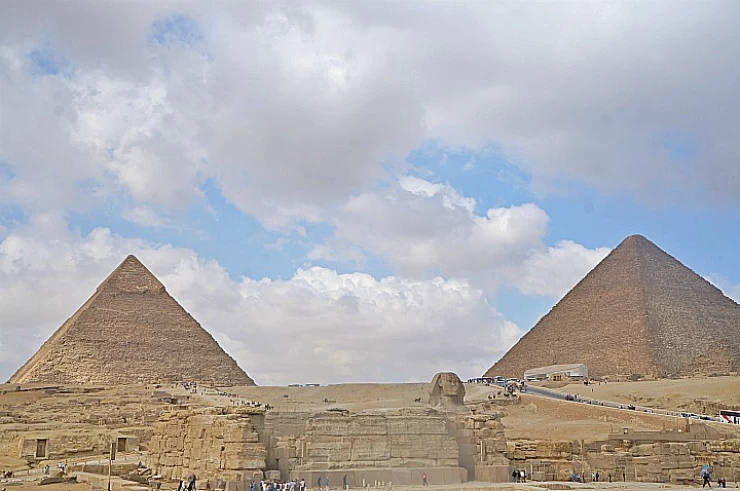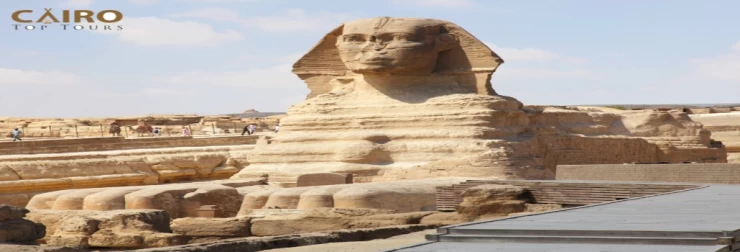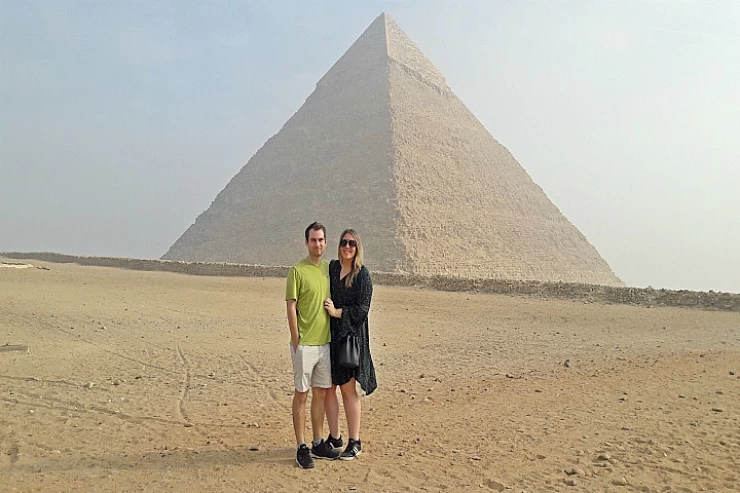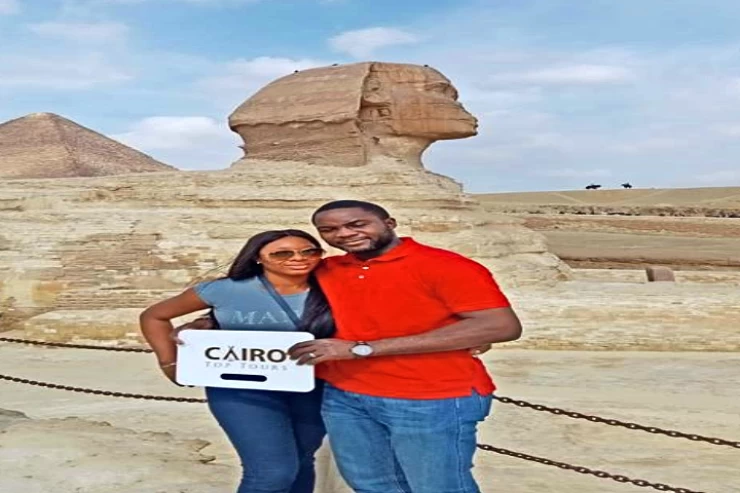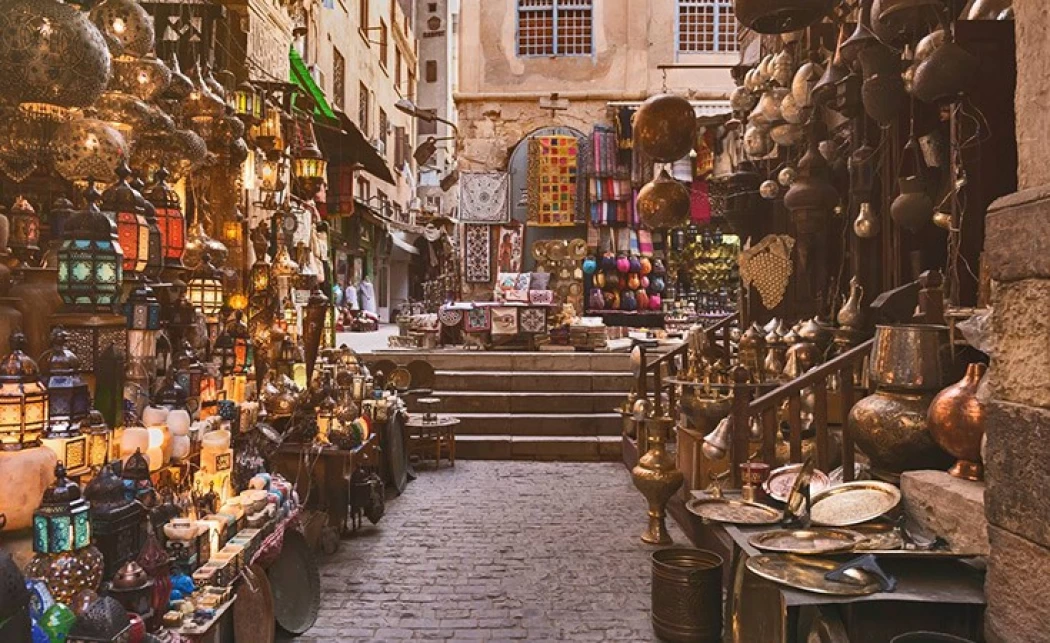
Khan El Khalili Market
In the ancient centre of Cairo, Egypt, there is a well-known bazaar called Khan el-Khalili (Arabic: خان الخليلي). Named for one of Cairo's many historic caravanserais, the bazaar district was founded as a hub of trade during the Mamluk era and has since grown to be one of the city's top tourist destinations for both Egyptians and visitors. Numerous Egyptian craftspeople and workshops that produce traditional crafts and mementos call it home as well. Originally referring to a particular structure in the neighbourhood, Khan el-Khalili now encompasses the entire commercial district.
Khan el-Khalili's location during the Fatimid era (10th–12th centuries) edit The Fatimid Caliphate, which at the time ruled over most of North Africa, portions of the Levant, and the Hijaz, first established Cairo as its capital in 969 CE. The general who overran Egypt for the Fatimids, Jawhar al-Siqilli, was given the task of building a massive palace complex to house the caliphs, their families, and the government's establishments.
Eventually, two palaces were finished: the greatest of the two on the east and the other on the west. In between them was a plaza called Bayn al-Qasrayn, which translates to "Between the Two Palaces." Khan el-Khalili's current location was once the southernmost point of the eastern Fatimid palace, where the Fatimid caliphs were buried in a mausoleum called Turbat az-Za'faraan, or "the Saffron Tomb. 57 Al-Qasr al-Nafi'i, a smaller palace, was also situated here; it is currently the location of Sulayman Agha al-Silahdar's Wikala from the 19th century.
Only the Caliph's family, government representatives, army units, and other individuals required for the smooth administration of the regime and its city were allowed to live in Cairo, which was a palace-city under the Fatimids.Due to the efforts of influential viziers, the city was first opened to merchants and other foreigners during the latter Fatimid era.
Caliph al-Mustansir's vizier, Badr al-Jamali, took on the work of expanding the city and constructing the stone gates and walls that are partially still standing between 1087 and 1092. He also made the city accessible to the general public at the same time, but the decision was swiftly overturned. A mint called the Dar al-Darb and a customs house for foreign merchants called the Dar al-Wikala were among the several reforms and building projects carried out by al-Ma'mun al-Bata'ihi, vizier under Caliph al-Amir, between 1121 and 1125. These were positioned in a prominent area close to the present location of the Madrasa of al-Ashraf Barsbay, which dates back to the 15th century. For the first time, this brought international trade into the city centre.
Saladin's dismantling of the Fatimid Caliphate in 1171 and the construction of a new fortified Citadel further south, outside the walled city, which would house Egypt's rulers and state government, was the formal opening of Cairo to all people.The city's historic Fatimid palaces were opened up for reconstruction. This ended Cairo's status as an exclusive palace city and began the process of transforming the city into an economic hub inhabited by ordinary Egyptians and frequented by international visitors. At the same time, the nearby port city and former capital of Fustat, which had previously been Egypt's commercial hub, was in a steady decline, opening the way for Cairo's ascendance.
The Qasaba (now al-Muizz Street) was Cairo's principal north-south street, running between the gates of Bab al-Futuh and Bab Zuweila and passing through Bayn al-Qasrayn. Under the Ayyubids and later the Mamluks, this avenue was a popular location for religious complexes, royal mausoleums, and commercial institutions. These structures were typically funded by the sultan or members of the ruling class. This is also where Cairo's big souqs evolved, establishing the city's primary economic zone for foreign trade and commercial activities.
The increasing number of waqf institutions, particularly during the Mamluk period, played a significant role in the development of Cairo's economic centre. Waqfs were charitable trusts under Islamic law that established the function, operations, and financing sources of the numerous religious/civic establishments constructed by the ruling elite.
Revenues from specific shops or other commercial establishments were frequently used to fund projects. The Sultan Qalawun complex, built in 1284-85 and included a madrasa, hospital, and mausoleum, was one of the first and most significant examples of this institution in Cairo's centre. A qaysariyya (a bazaar or market complex with rows of stores) was established in front of the nearby Ayyubid-era madrasa of al-Salih, which contributed to the complex's earnings. This qaysariyya was a noteworthy early example of the purpose-built commercial structures that the Mamluks established in Cairo as part of a waqf. Qalawun's qaysariyya had a façade on Qasaba street, while some of its stores were accessible via an inner alley off the main street.
Over the years, space along Qasaba Avenue has slowly reduced as new developments encroached and open spaces disappeared. As the main street grew packed with businesses and space for further expansion there ran out, new commercial structures were instead built further east, close to al-Azhar Mosque and the shrine of al-Hussein, where some space remained available.
Instead of having mobile market stalls set up in open spaces, the city's souq sections were gradually replaced by fixed stone structures with built-in spaces for individual merchants. This was partly due to the rulers' desire to impose tighter control over commercial activities: fixed constructions were easier to count, tax, and regulate than movable market stalls.As the city became denser and space was limited, architects opted to create multi-story structures known as khans (Arabic: خان) or wikalas (Arabic: وكالة), a form of caravanserai (merchant inns). These structures were designed around an interior peristyle courtyard where merchants could keep their goods, with upper levels serving as dwelling quarters. Their street facades.
Egypt had been greatly devastated by the ravages of the Black Death by the time of Sultan Barquq (r. 1382-1399), the first Burji Mamluk sultan, but it remained a centre of enormous economic activity, with many commercial and religious buildings still being built. 147 During Barquq's first reign (1382-1389), his Master of the Stables (amir akhur), Jaharkas al-Khalili, demolished the Fatimid mausoleum (Turbat az-Za'faraan) to build a massive khan in the city centre. The khan became known as Khan al-Khalili, which is his name.The name gradually evolved to represent the entire area. Al-Khalili allegedly disposed of the bones of the Fatimid royal family by tossing them into the garbage hills east of the city.
Later Mamluk aristocracy constructed commercial establishments in the vicinity and beyond. During Sultan Qaytbay's reign, one of his amirs, Yashbak min Mahdi, constructed the Rab' al-Badistan, a rental apartment complex across from the Khan al-Khalili.Qaytbay personally built the Sultan Qaytbay Wikala, which is located further east, near al-Azhar. By the late 15th century, the area surrounding Khan el-Khalili had become a major hub for foreign trade, including the sale of slaves and precious stones.
ruler al-Ghuri, Egypt's last effective Mamluk ruler (r. 1501-1516), overhauled the district's layout in the early 16th century with a massive demolition and new construction campaign. In addition to establishing his own mosque and funeral complex, as well as a massive Wikala named for him nearby, he demolished and rebuilt al-Khalili's old khan in 1511. For centuries, it was known as the Khan al-Fisqiya ("Khan of the Fountain"), before eventually becoming the Wikala al-Qutn ("Wikala of Cotton").
Al-Ghuri also transformed the nearby region into a souq known as the Suq al-Nabulsi, with magnificent stone gates. He also attempted to impose a more consistent grid pattern on the neighbouring district.179 Along with the stone gates, this type of complex mirrored what Ottoman cities called a bedesten: a central market where the most valuable commodities were sold, often with roofed streets and barred gates at night (akin to a qaysariyya). It is believed that al-Ghuri's structure was done in imitation of such commercial complexes in important Ottoman cities, as this was a time when the Ottoman Empire was the principal adversary of the Egyptian Mamluk empire and Turkish merchants were becoming more influential .
What remains from al-Ghuri's reign are the Suq al-Nabulsi and its two beautiful stone gates, as well as the façade and entrance to the Wikala al-Qutn. All of these structures are located on Sikkat al-Badistan Street. The western gate was originally known as Bab al-Silsila but is now known as Bab al-Badistan, and the eastern gate, across from the Wikala al-Qutn's entrance, was originally known as Bab al-Nuhhas but is now also known as Bab al-Ghuri.
Khan KEl Khalili Bazaar is omnipresent in Islamic Cairo as the oldest and most well-known market in the Middle East. Tracing its origins back to the 14th century, this colorful bazaar has been a center of trade, culture, and art for over 600 years. As a tourist or traveler who has come to Cairo more than once and knows the place inside and out, Khan El Khalili will always provide an experience that is packed with charm and historical significance, as well as that exotic, unforgettable touch.
A Walk Through History Emir Djaharks El Khalili formed Khan El Khalili in 1382, and he built it as a caravanserai where traders could rest and keep their goods. Over the years, it transformed into a huge bazaar where various regions’ traders gathered to sell spices, silks, and other precious metal products, among others. The bazaar continues to have narrow alleyways and cluttered stalls constructing similar old houses, which are such that the visitors feel as if they have traveled back in time.
Khan El Khalili is viewed as a priceless resource of ancient Coptic arts in modern Cairo, retaining its medieval elements. The market’s winding passages are filled with haggling customers and vendors, hungrily inhaling the scent of different spices, while artisans are busy producing everything from jewelry to leather.
Unveiling the Hidden Treasures of the MarketEvery nook and cranny in Khan El Khalili has something different to offer. This makes it a traveler’s and shopper’s utopia filled with endless options. These are some of the orders of interest:
Some of the founders: Find Khan El Khalili, and every Egyptian will get some handicrafts and souvenirs. In the bazaar, you’ll also find more than just delicately crafted gold and silver wear, including foreign hand-carved wooden boxes, and brass, and colored glazed mosaic lantern lamps. Hand-serrated: Several artists, such as glass blowers, carpet makers, and silver craftsmen, work in small studios within the market, allowing for their work to be seen in the process of creation. These are artists who have mastered their art over many years. Another interesting aspect of the very well-known marketplace is the perfume stores, which have Egyptian-made perfumes in small, fragrance-filled glass bottles easily arched for cheap prices. These perfumes are made from plants made in Egypt.
2. Medicinal plants and spice shops
Stirring Hints of Tantalizing Spices: The spice markets of Khan El Khalili are a sight to behold. You will find large piles of various spices, such as saffron, cumin, cardamom, cinnamon, and many more, filling the stalls and creating a rich aroma. Healthy Stuff: As well as that, you are likely to come across natural herbs and some other products, like tea made out of hibiscus flowers, black seed, and camphor. Some of them sell these herbs and answer questions regarding the side effects of these herbs.
3. Papyrus and Ancient ObjectsPapyrus Art of Ancient Egypt: As you stroll around the market, you will find many stores depicting Egyptian art on papyrus where talented artists reproduce scenes from ancient Egypt. Such unique paintings feature deities, the royal rulers, and even the ancient writing system, providing a glimpse of the history of Egypt.
Reproduction Artifacts: There are various statues of ancient Egyptian gods, such as the dog-headed god Anubis, goddess Bastet, and Horus, as well as other mock tomb-style jewellery sold at some of the stores in the area.
Textiles and Dressing Dresses and Garments: For those considering themselves fashionistas of some sort, the bazaar also offers not only definitely outdated but some stylish galabeya long robes and even kaftan dresses, along with some embroidered scarves and shawls.
Traditional Weaves: Other striking traditional handlooms, together with carpets like Egyptian cotton and kilim, tell much about the area’s interlacing art.
Khan El Khalili Hotels: Landmarks and GastronoIn addition to shopping, there is a possibility for tourists to enjoy the typical food of the country and get acquainted with the culture in som
1. El Fishawi’s Café:
the one owned for centuries (Café of Mirrors)Historical Context: El Fishawi’s Café is one of those old Cairo cafes that has withstood the test of time over 200 years. The place has been visited by most renowned Egyptian authors, painters, and intellectuals, and therefore, eternally seems frozen in time.
Atmosphere and Ambiance: Situated at the center of the bazaar, El Fishawi’s has an inviting warm atmosphere, owing to its adorned walls with mirrors, wooden tables, and busy patrons. It is an ideal place for taking a break while sipping either mint tea or Turkish coffee and simply enjoying the passing crowd.
Shisha Tradition: For those interested in trying shisha, El Fishawi’s is an excellent place to indulge in this traditional water pipe, available in a variety of flavors, from apple to grape.
2. Local street food
Delectable Snacks: As you wander through Khan El Khalili, you’ll find street vendors selling Egyptian snacks such as taameya (Egyptian falafel), samosas, and koshari. These treats offer a delicious and affordable way to experience the local cuisine.
Sweet Delights: Don’t miss out on basbousa (sweet semolina cake) and konafa (a dessert made from thin noodles soaked in syrup), which are popular Egyptian sweets.
Cultural Experiences: Art, Music, and Stories
Khan El Khalili is not just a marketplace; it’s a cultural hub where you can immerse yourself in Cairo’s vibrant arts scene.
1. Traditional Sufi Performances
Al-Tannoura Dance Troupe: At Wekalet El Ghouri, a nearby historic venue, you can witness the Al-Tannoura Dance Troupe, which performs a mesmerizing blend of Sufi music and dance. The whirling dervishes, dressed in colorful skirts, spin in time with the music, creating a hypnotic display of devotion and artistry.
2. Live music and street performersStreet Artists: Throughout the bazaar, you may encounter street performers, including musicians playing traditional instruments like the oud and qanun, adding to the lively atmosphere of the market.
Storytellers: Occasionally, you may find traditional storytellers, or hakawati, who share folk tales and legends of Cairo, providing a glimpse into Egypt’s rich oral history.
An early evening visit would be best since the bazaar starts lighting up, with the sound of music and performances turning Khan El Khalili into a stage for living culture.







